Page 7 -- RMAA Performance
RMAA
Ah, another review, another version of RMAA. We used RMAA 6.2.3 to analyze and compare the Prodigy 7.1e in a number of ways. RMAA has several tests it does, but the main ones I tend to focus on are the noise, THD, and IMD tests.
Taking a look at the RMAA test results summary, we can see that the Prodigy 7.1e does a very good job all around. The numbers from its 24-bit/96 KHz mode are really very good.
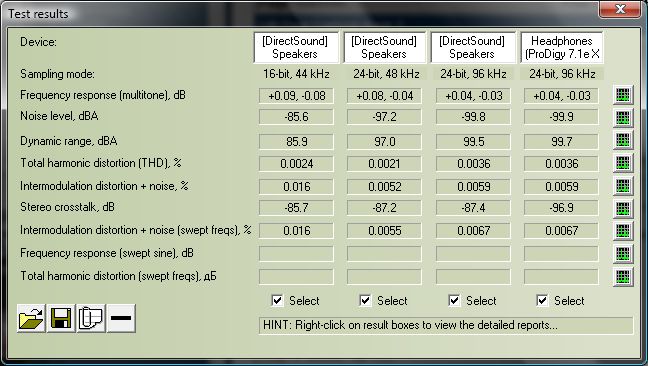
Let's start with the fun stuff first. Testing the 24-bit/96 KHz modes yields the best results from the card, and it is excellent. The RMAA summary:
Summary 24-bit/96 KHz loopback line-in, speaker-out
| Frequency response (from 40 Hz to 15 kHz), dB | +0.04, -0.03 | Excellent |
| Noise level, dB (A) | -99.8 | Excellent |
| Dynamic range, dB (A) | 99.5 | Excellent |
| THD, % | 0.0036 | Very good |
| THD + Noise, dB (A) | -85.8 | Good |
| IMD + Noise, % | 0.0059 | Excellent |
| Stereo crosstalk, dB | -87.4 | Excellent |
| IMD at 10 kHz, % | 0.0067 | Excellent |
| General performance | Excellent |
The only slightly bad number there is the Stereo Crosstalk, but even at -87.4 dB, it's pretty good. You may notice it, most likely not, but recordings wouldn't have as much depth or spread. The Total Harmonic Distortion (THD) is very good, but the good news is that it's still very low. Most people can detect about .05% THD, so I would consider this next to inaudible unless your ears are very well trained.
Let's take a look at the graphs, shall we? First is the Frequency Response 'curve'.
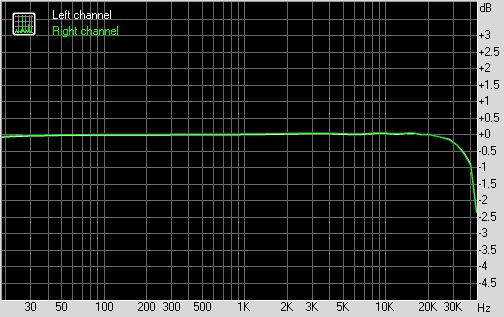
I guess in the olde days frequency response for audio electronics was more of a curve. This is more like a line, right up to the Nyquist frequency of 48 KHz. No, you won't be able to hear it.
Below is the Dynamic Range graph, looking very clean, and at -99.5 dB it is very good. This is basically the difference between a 1 KHz tone and the noise floor. The human ear, according to Wikipedia, has about a 140 dB range, and a 24-bit recording has a theoretical maximum of 144 dB.
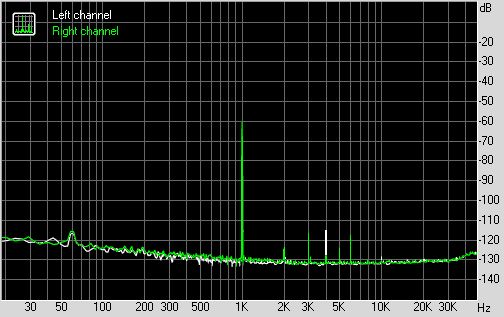
In the immortal words of my Taiko drum master, "very dynamic, very dynamic."
Moving on, the THD+Noise graph is also very clean. The point of this graph is to play a 1 KHz tone and measure the harmonic distortion that the electronics introduce.
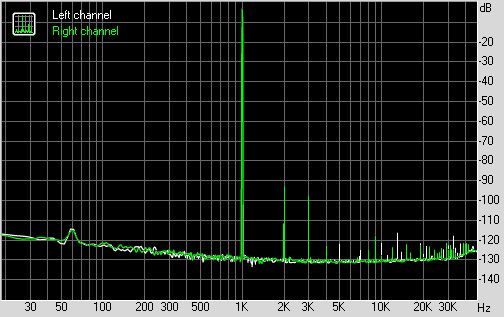
This is very clean, the first harmonic (octave) is at 2 KHz and is more than 90 dB below, which is very, very good. RMAA considers this 'excellent' performance, but we've seen performance from the ASUS Xonar at around -110 dB, just for reference.
Crosstalk is another interesting metric, basically how much signal from one channel is leaked into the other. It is one that you can also hear, if crosstalk was zero you'd basically have mono sound, that is, both channels (Left and Right in stereo) would play the same signal. Ideally, you want this as low as possible, and for the Prodigy 7.1e at -87.4 dB, it's pretty dang low.
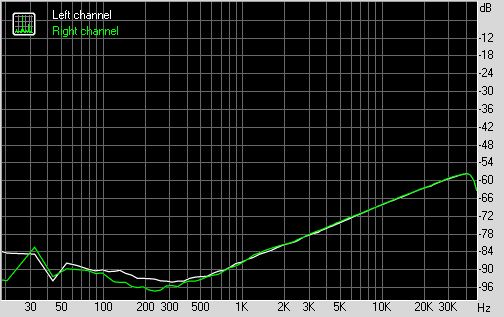
Lastly, here's the punishing IMD test. This test is shows the results of two frequencies (60 Hz and 7 KHz) when played together produce tones (spurs) not harmonically (octave, fifth, seventh, etc.) related to either frequency. To be brief, not much going on here.
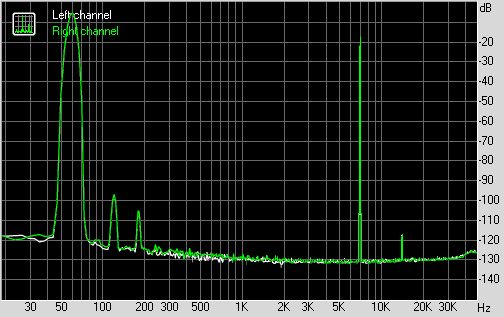
Overall, I will say the Prodigy 7.1e puts out superb results for RMAA. However, if you aren't satisfied, there's always the Headphone output.
Summary 24-bit/96 KHz, loopback line-in, headphone out
| Frequency response (from 40 Hz to 15 kHz), dB | +0.04, -0.03 | Excellent |
| Noise level, dB (A) | -99.9 | Excellent |
| Dynamic range, dB (A) | 99.7 | Excellent |
| THD, % | 0.0036 | Very good |
| THD + Noise, dB (A) | -85.8 | Good |
| IMD + Noise, % | 0.0059 | Excellent |
| Stereo crosstalk, dB | -96.9 | Excellent |
| IMD at 10 kHz, % | 0.0067 | Excellent |
| General performance | Excellent |
Aw yeah. Still Excellent performance, but stereo crosstalk gets a substantial boost by using the dedicated headphone output.
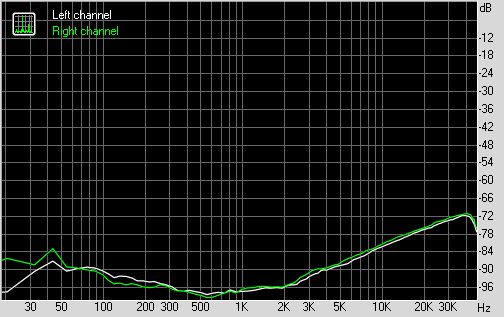
It looks the same as the regular 24-bit/96 KHz graph, only much, much lower. Nice!
Well, there's got to be something else I can go on about. Eh. Creative DSP chips have had a tendency to have SRC problems at 16-bit/44.1 KHz (CD quality) stretching back all the way to the SB Live. However, Creative nuked this problem with the X-Fi (20K1 DSP), and this PCIe X-Fi chipset seems to have it beaten down to pretty low levels, too.
16-bit/44.1 KHz IMD graph:
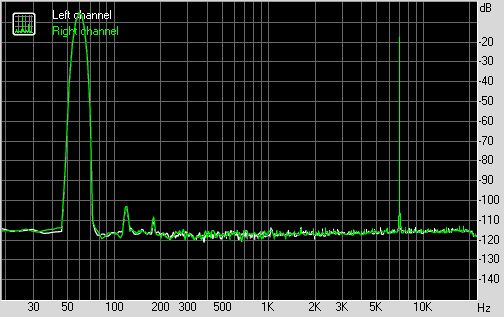
The graph itself looks very clean, so I doubt anyone will have a problem with it really. SRC, or sample rate conversion, usually introduces artificial tones into the sound that sound pretty nasty, and the IMD graph will usually show us that.
Overall, very fine results actually. Compared to the ASUS Xonar D2X, however, you do get quite a lot better results for not much more money. And you get the Xonar lights. If you dont feel like investing in the Xonar (or the Essence, if you roll with headphones), or Audiotrak's Prodigy HD2, then the Prodigy 71e is a tremendous performer for the price.
